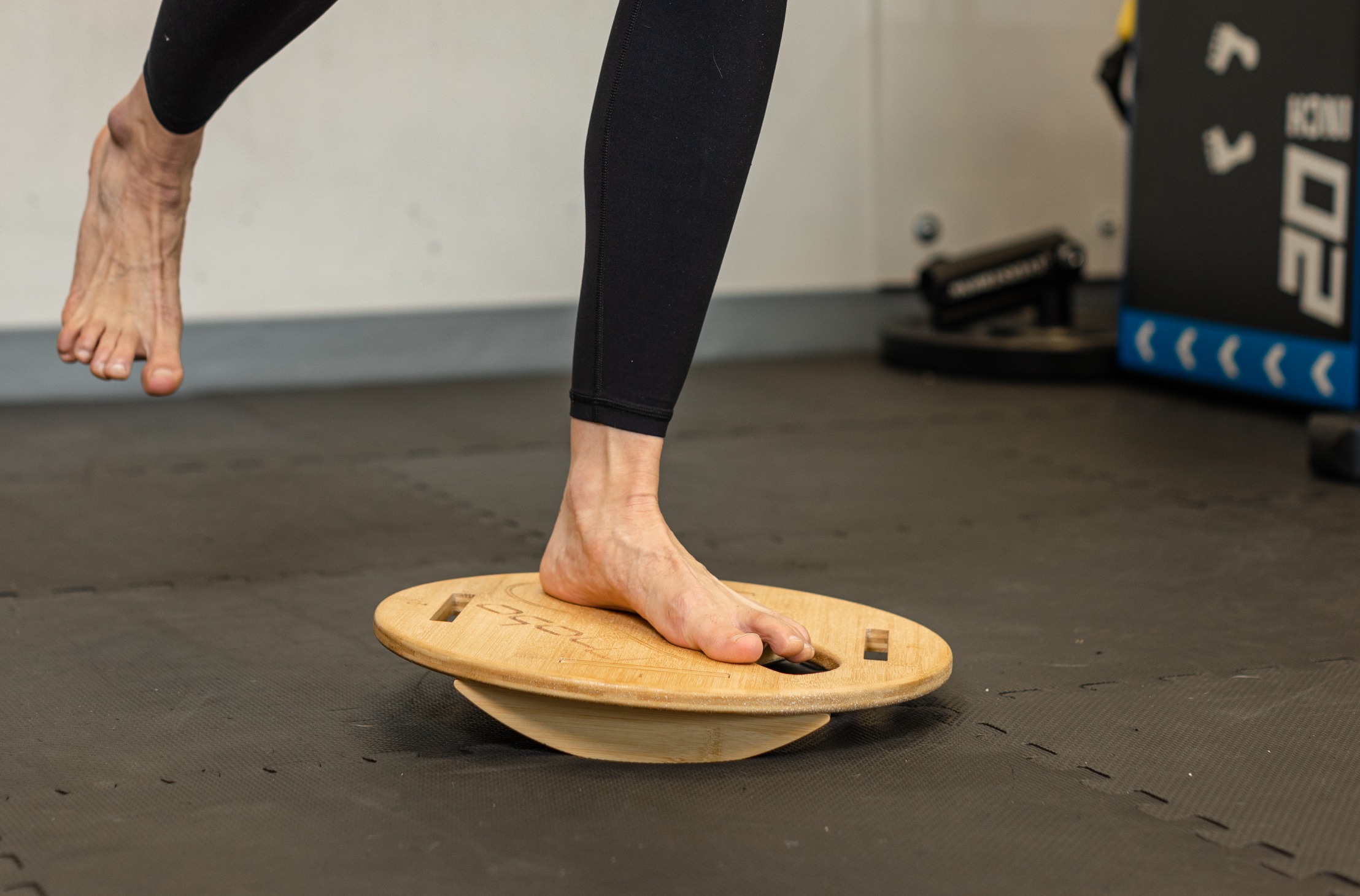This isn’t a post about barefoot running. This post is about getting our bare feet on the ground whenever possible. Our feet are made to do so many things for our movement, nervous system, and brains, yet we rarely use them to their full potential. Today’s running shoe market is trending toward marshmallow fluff and clouds, and we otherwise spend much time in various other barely functional footwear. Yet the barefoot is our only connection between our bodies and the earth unless you find yourself frequently rolling around in the grass in your backyard.
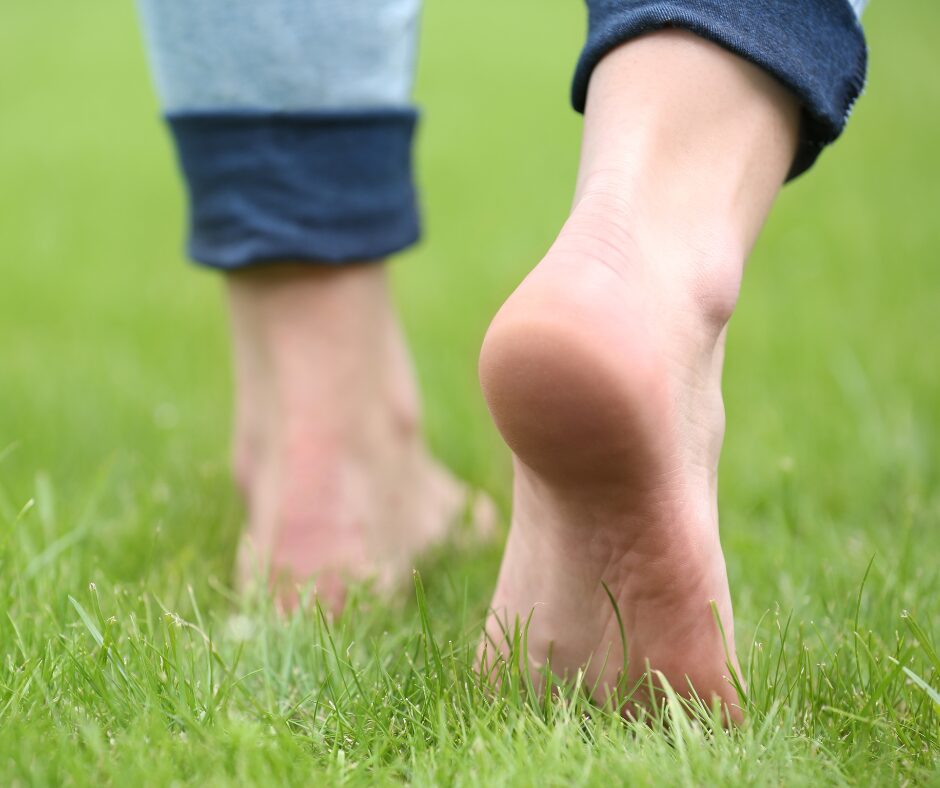
This post aims to highlight the benefits of going barefoot and inform you how you can incorporate barefoot training into everyday life without giving off hippie vibes (unless that’s your thing!) or putting your foot health at risk. The good news is that you don’t need to be fully invested to experience the benefits of being barefoot.
In this post, I’ll refer to being barefoot as “barefoot training.” As mentioned above, this does not mean barefoot running. I think it takes A LOT to handle barefoot running, so I do not intend to revamp the barefoot running movement. That’s not to say it doesn’t work for some runners. Barefoot training refers to the exercises required to strengthen the foot and optimize its function. Barefoot training also refers to the time spent barefoot, such as during strength training or walking.
The Benefits of Barefoot Training
Barefoot Training, movement, posture, and balance
Optimal movement requires optimal foot function. Ideally, shoes and inserts should only be used to enhance the foot’s function, not replace it. In some cases, shoes and inserts can also help with foot dysfunction caused by a fixed structural issue (congenital or acquired). We aren’t going to get into those issues here, but I would highly recommend getting screened by a Barefoot Training Specialist to assess your foot structure and function.
To achieve optimal foot function, we need to use the foot as intended; barefoot on the ground. This type of training allows the foot to develop the natural arches, muscles, and tendons that support the weight of our body and allow for optimal alignment of the legs, hips, and pelvis. This results in efficient propulsion during walking, running, and jumping.
There is also sensory input we only get when we are barefoot. The many nerve endings in our feet provide valuable information that allows other muscles in our hips and core to work more efficiently. This creates more power and stability. It also allows us to respond to changes in terrain more quickly and adapt more efficiently to the forces with which we hit the ground.
Barefoot training, Breathing, and stress
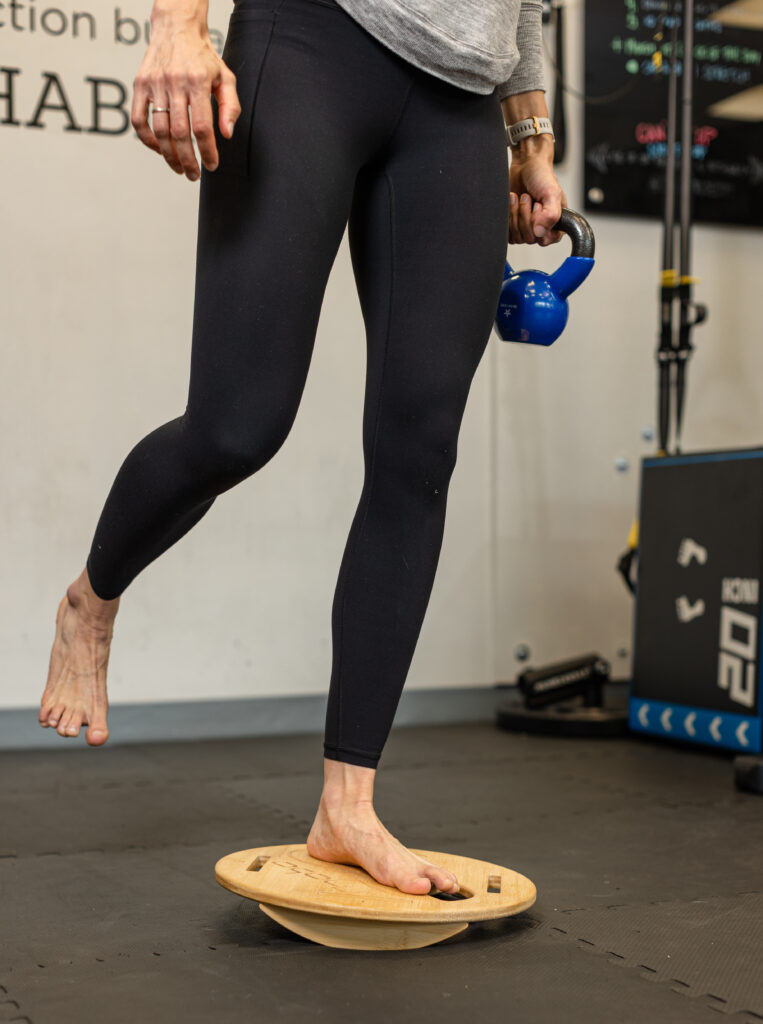
You have probably heard of grounding. There are mental practices of grounding, but barefoot training is the physical practice of grounding, especially when you can get your feet on natural surfaces. The sensory input of barefoot walking sends signals to the brain that help regulate breathing and stress levels.
One reason for this is that when our body feels more stable, so does our mind. This is partly due to the feedback our mind constantly receives from inside our body (interoceptive) and outside our body (exteroceptive).
The sensory feedback from the foot also stimulates certain neural pathways that connect to the vagus nerve, primarily responsible for our autonomic nervous system. When the vagus nerve is stimulated, it can reduce the stress response in the body. Vagus nerve stimulation can positively affect anxiety, inflammation, the immune response, and more. The vagus nerve also improves breathing patterns by regulating the function of the diaphragm.
Barefoot Training and Cognition
In some studies, barefoot walking has been linked to improved cognition. Some of the sensory neurons in the feet stimulate neural pathways that go to the areas of the brain that are responsible for attention, memory, and learning.
I’ve found some of the studies on cognition especially interesting because of the traditional treatment of older adults who are losing their balance. It is common practice to recommend more supportive shoes with stiffer/thicker soles. One could argue that this does not help balance and leads to further cognitive decline. (Just my thoughts!)
How to get started with barefoot training
Gain awareness of your feet.
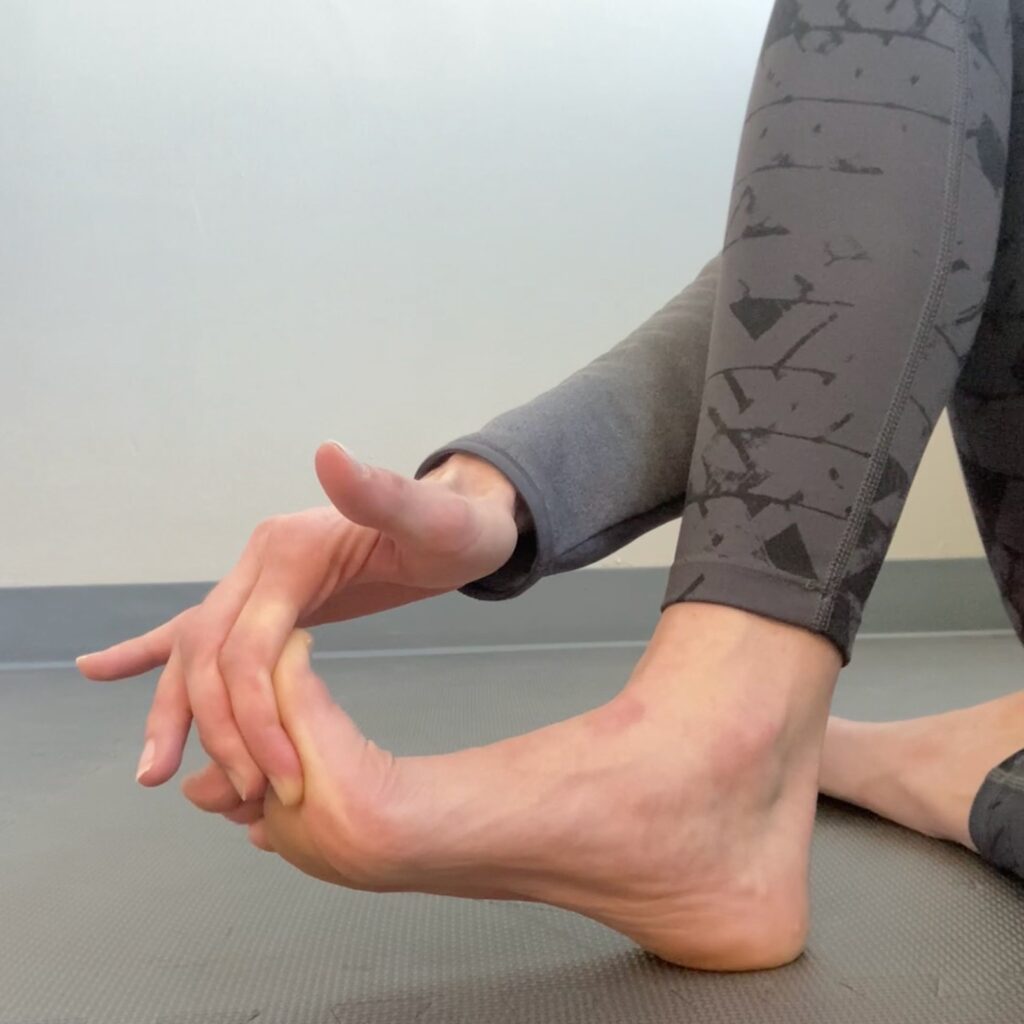
Before starting any barefoot training program, you must know how your feet function now and how they are meant to function. If you have structural differences in your foot, which may be congenital or acquired, you can learn if they are fixed (can’t be changed with training) or flexible (can be improved with training).
A common example is “flat feet.” Some people have structurally flat feet, meaning the arch is low in both non-weight-bearing and weight-bearing. However, most people who say that they have “flat feet” have the potential to build the strength of their longitudinal arch because they have normal arch height. The arch is only collapsing in weight-bearing. This is due to weakness, lack of awareness of the feet, or reliance on external supports such as shoes and inserts.
We recommend setting up a free discovery visit with a barefoot training specialist to learn more about your feet and their potential.
Strengthen Your Feet
There are many ways to strengthen your feet, and I highly recommend you see a specialist to make sure you are doing the ones that work best for you. If you have some level of foot dysfunction, which most people do, some exercises can make things worse. Many foot exercises I see routinely prescribed by physical therapists in traditional practices are not ideal for optimal foot health (i.e., towel scrunches).
Here is one example of a foot-strengthening exercise that I find safe for the majority of people:
Use your feet
While I don’t recommend barefoot running for most people, and I’m not promoting walking through Philadelphia barefoot, I think we need to be barefoot as much as possible. When it’s safe to do so, I recommend walking around outside your house barefoot. Get your feet on natural surfaces such as grass, dirt, and wood.
I also recommend doing strength training barefoot, keeping safety in mind. Most gym shoes aren’t really protecting our feet from a dropped dumbbell, but they do keep us from slipping. Most gyms also require that you have shoes on. If that’s the case, you can try wearing barefoot shoes. I love this review of barefoot shoes, which helps determine the best fit for your foot type.
Of course, these activities should only be done barefoot once it has been determined that your feet are strong enough to do so.
Enhance sensory feedback
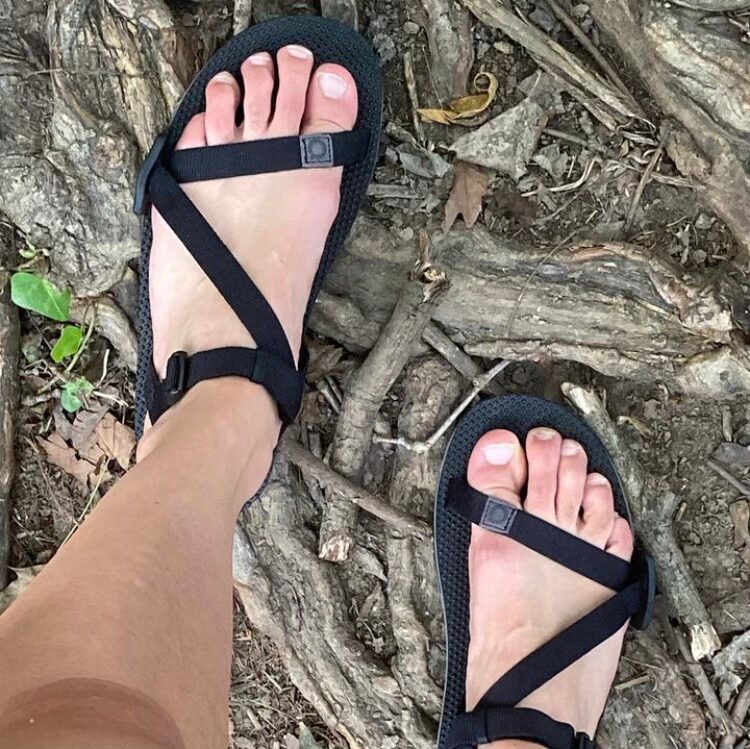
There are some things that can influence how much sensory input we get from our feet. Anything that lies between our feet and the ground will reduce feedback. This includes socks. Also, surfaces that don’t vibrate (concrete) reduce sensory input. This is why it can be so hard to stand/work on concrete floors.
You can try barefoot shoes as mentioned above if you have to wear shoes. You can also use textured inserts that enhance sensory input. I recommend Naboso Activation Insoles.
I use the Naboso Training Mat when I do strength or balance training because it positively influences my movement and posture. I don’t have to think nearly as much to maintain good foot posture while performing various lifts and movements.

